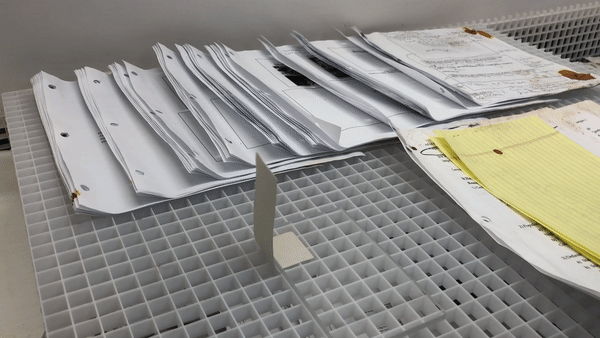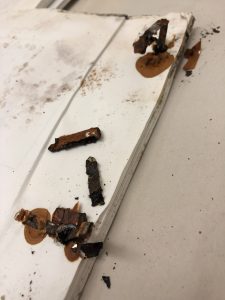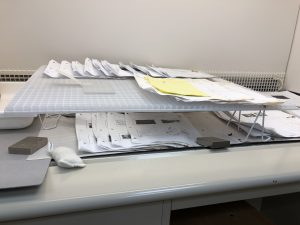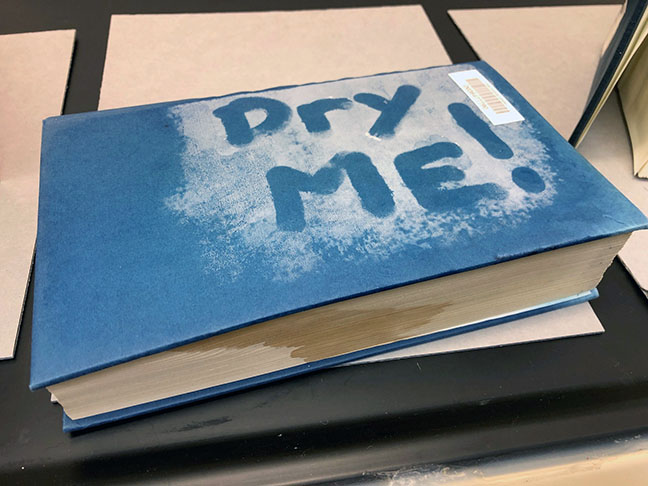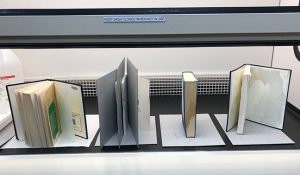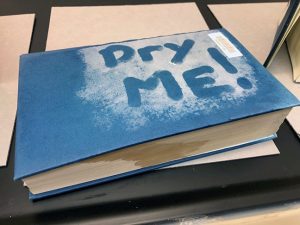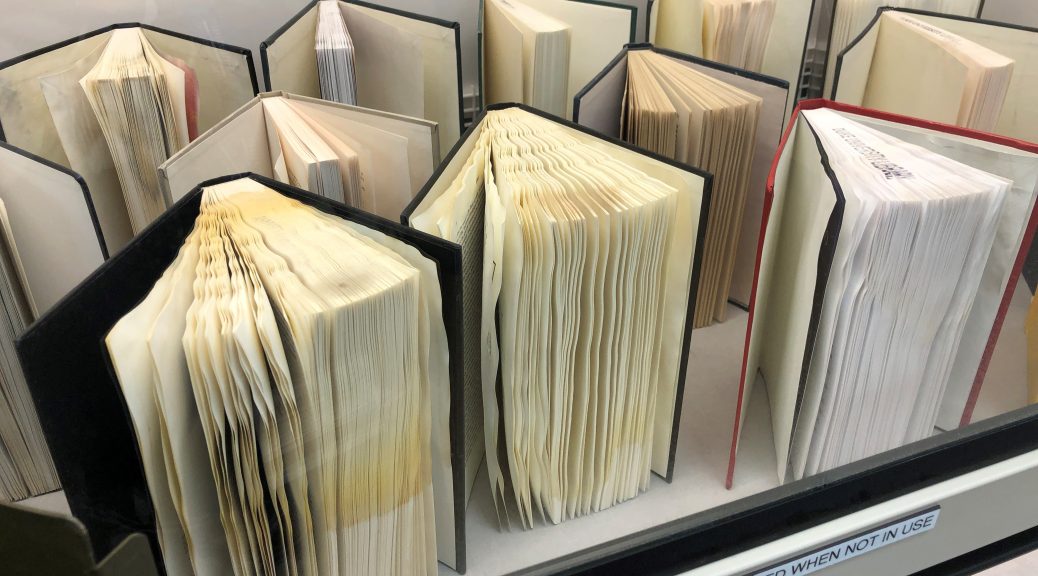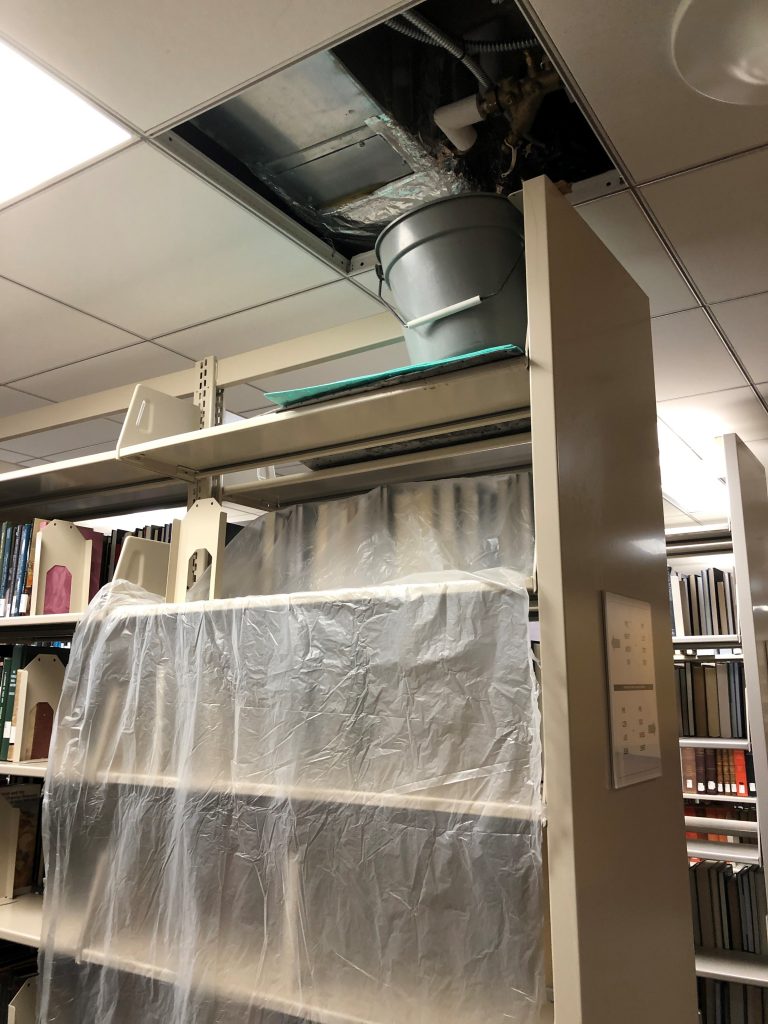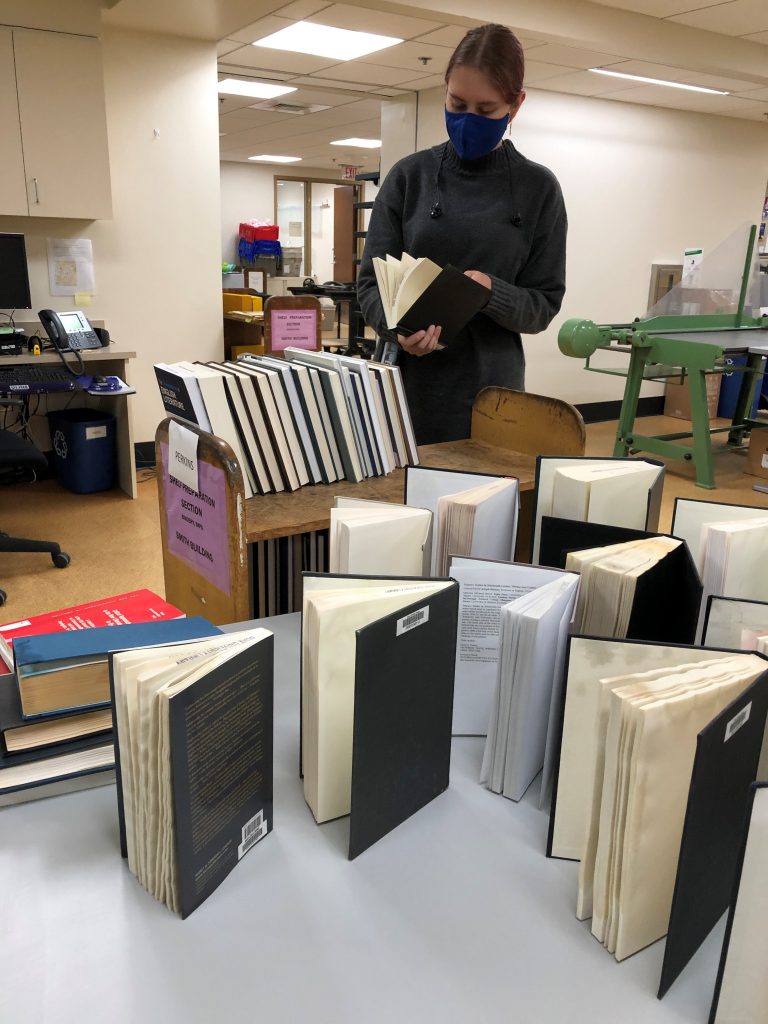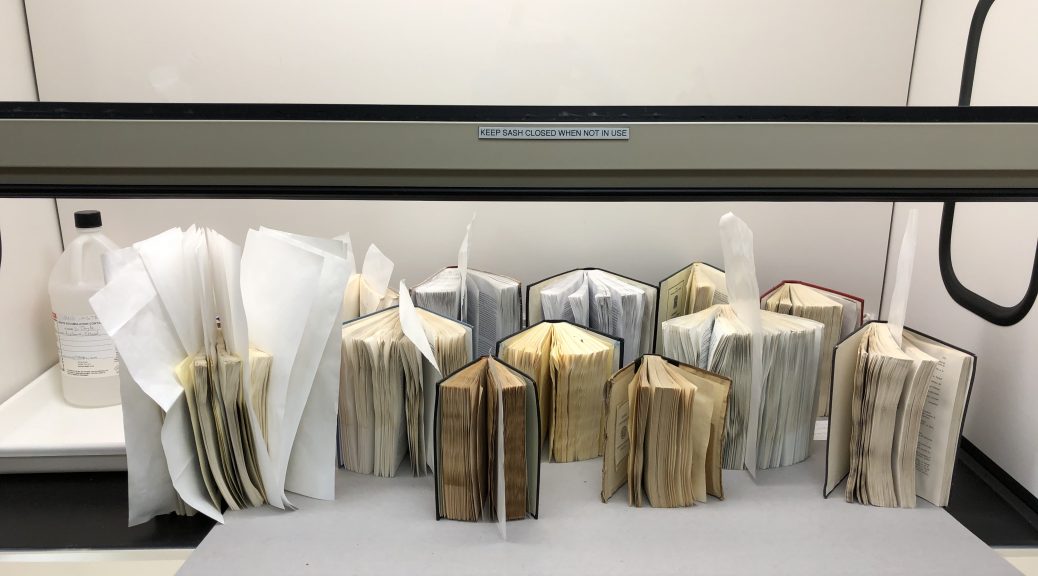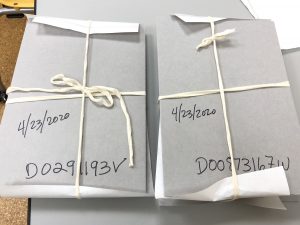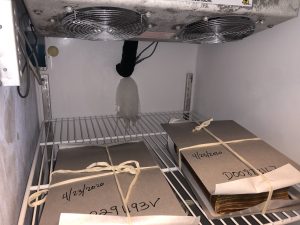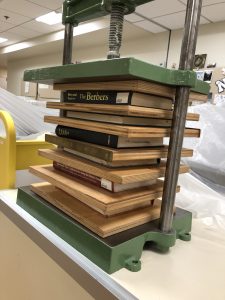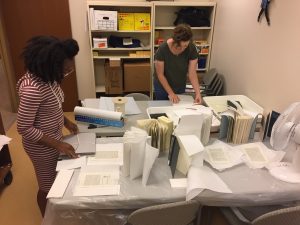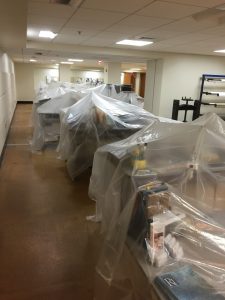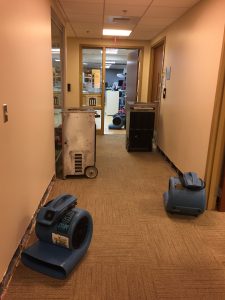It’s been a busy week this week in the Underground. We hosted a tour for the Class of 1990, who had their 20th Reunion a bit late due to the pandemic.

We have a tremendous amount of mold recovery work in the lab at the moment. We have been drying and vacuuming materials pretty much non-stop for several weeks. There is no light at the end of the tunnel yet, but every page gets us closer.

We had an all-hands-on-deck repair day for the circulating collections backlog. With no summer students this year, we had a lot of materials waiting for their 15 minutes of fame aka Quick Repair. We got through 107 items in half a day.
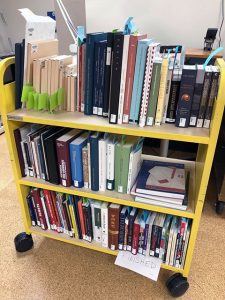
Speaking of backlogs…Technical Services has been working through a lot of musical scores lately and they have backed up a bit in the lab. This workflow is next on our list of “get it done” projects.
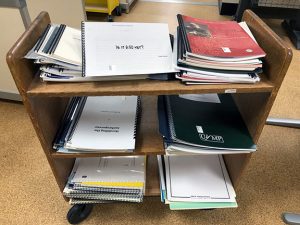
Preparations for the Lilly Library renovation started back in 2019 and really hasn’t stopped. We are getting close to finishing a huge project to provide enclosures for items going to the Library Service Center for the duration of the renovation project. Tyvek envelopes are a quick and economical enclosure for brittle and fragile materials that we can’t treat before going off site.
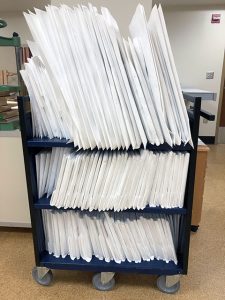
Our student assistant is back, and plowing through work. Look at all the brittle pamphlets she has put into binders this week. We love seeing work pile up on the QC shelf.

And of course, at the time of writing this post, we are experiencing the remnants of Hurricane Ian. We spent Thursday afternoon putting out absorbent pads around our known leaks, and making sure everyone knew the disaster team’s contact information.

For organizations looking for recovery help, here are some resources:
- Northeast Document Conservation Center Disaster Assistance
- American Institute for Conservation National Heritage Responders
- National Park Service Before and After Disasters Guide
- SAA National Disaster Recovery Fund
- The North Carolina Preservation Consortium and the North Carolina Museum Council jointly manage a Disaster Relief Grant program for its members. Application information is here.
We are thinking of all our colleagues in Florida whose institutions took a direct hit, as well as everyone who has experienced the ravages of this storm.



